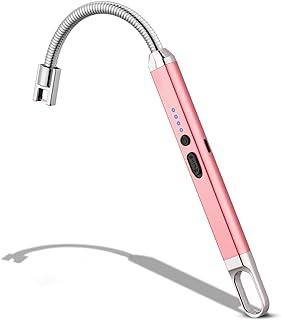A History of the Lighter: From Fire to Flame
The history of the lighter is intertwined with the human desire for controlled fire. While the first tools to make fire were undoubtedly primitive, the journey to the sleek, modern lighter is a fascinating one:
Early Beginnings:
* Fire Sticks: The earliest form of fire-making involved friction, using two sticks rubbed together until they ignited. This method, dating back thousands of years, was used by our ancestors worldwide.
* Flint and Steel: Around 500 BC, the discovery of flint and steel revolutionized fire making. Striking flint against steel produced sparks that could ignite tinder, a highly flammable material.
* The Tinderbox: This portable device housed flint, steel, and tinder, allowing people to make fire on the go. It was a staple for centuries, especially among travelers and soldiers.
The Dawn of Portable Flame:
* The D?bereiner's Lamp: In 1823, German chemist Johann Wolfgang D?bereiner invented a device utilizing hydrogen and platinum to create a flame. Though not the first lighter, it was an early example of a portable, self-igniting flame source.
* The First "Lighter": The term "lighter" emerged in the late 19th century, referring to various types of fire-starting devices. The earliest true lighters used flint and steel but were far less efficient than modern versions.
The 20th Century Revolution:
* The Zippo Lighter: Introduced in 1932, the iconic Zippo lighter utilized a flint and steel mechanism in a durable, windproof design. Its popularity soared during World War II, and it remains a symbol of American ingenuity.
* The Butane Lighter: In the 1960s, butane lighters gained popularity. These utilized a pressurized gas cartridge to ignite a fuel-soaked wick, offering a cleaner, more efficient alternative to flint and steel.
* Electric Lighters: The 1970s saw the introduction of electric lighters, which used a heated coil to ignite fuel. These offered a flameless, safe option for indoor use.
Modern Innovation:
* Disposable Lighters: These cheap, single-use lighters, usually filled with butane, became ubiquitous in the late 20th century.
* Plasma Lighters: Using a high-voltage electrical arc, plasma lighters offer a flameless, windproof, and environmentally friendly alternative.
* Smart Lighters: Today, some lighters incorporate features like Bluetooth connectivity, built-in charging, and even temperature control.
The Future:
The evolution of the lighter continues. As technology advances, we can expect to see even more innovative, sustainable, and user-friendly lighter designs in the future. From fire sticks to plasma arcs, the lighter's journey reflects humanity's enduring fascination with fire and our constant pursuit of better ways to control it.


